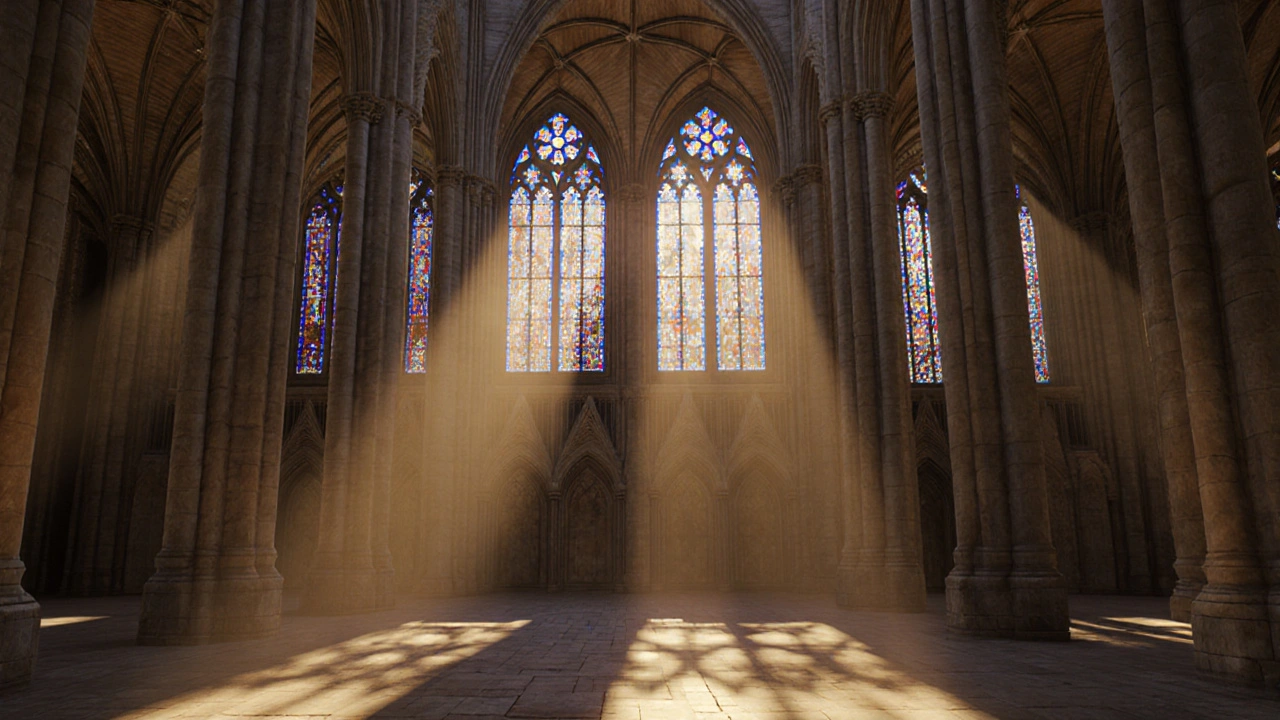Gothic architecture isn't just beautiful-it's brilliant engineering. Discover how pointed arches, flying buttresses, and ribbed vaults defied gravity and turned stone into light-filled cathedrals that still stand today.
Stained glass: how it works, how to care for it
Stained glass does one simple thing very well: it turns plain light into color and mood. Whether you're looking at a church window, a vintage lamp, or a new partition, the materials and build tell the real story. This page gives clear, usable info: how stained glass is made, how to spot good work, basic care, and when to hire a restorer.
What stained glass actually is and how it’s made
Stained glass is colored glass cut into shapes and joined. The common methods are lead came (thicker metal strips) and copper-foil (Tiffany style, finer lines). Some panels use painted details fired onto the glass for faces or tiny shading. Glass color comes from metal oxides added during manufacture—cobalt makes blue, copper makes greens and reds, and gold can produce rich reds or pinks.
If you’re judging quality, check these things: tight, even joints; smooth solder lines; stable support bars on large panels; and consistent glass texture. Cheap pieces often use paint-only color on clear glass, which peels. Authentic work shows depth: different glass textures, layered colors, and crisp joins.
Care, repair basics, and practical tips
Daily care is simple: dust with a soft brush or microfiber. For deeper cleaning, use distilled water and a tiny squirt of mild dish soap on a soft cloth—no ammonia, no vinegar, and never pressure-wash. Avoid abrasive pads. If you see bulging came, loose glass, cracks, or corroded solder, stop and consult a pro. Small surface cracks can sometimes be stabilized, but big structural problems need restoration.
Restoration choices matter. A good restorer will document the piece, match glass types closely, and use reversible techniques when possible. Ask for references and before/after photos. For historic windows, check local conservation rules—some places require specific methods or approvals.
Want stained glass in a modern home? Consider backlit panels for bathrooms or kitchen islands, or thin panels in interior doors to add privacy with color. For exterior windows, ask about weatherproofing: lead came is classic but needs proper flashing and drainage; epoxy and reinforced frames work better in exposed locations.
Buying tips: ask about glass origin, whether the artist uses mouth-blown or machine-rolled glass, and what metals are in the came (lead vs zinc vs brass). Get a written warranty and a care sheet. For custom work, request a sketch and a mock-up photo under the light you’ll use—stained glass looks different at sunrise, noon, and under artificial light.
If you’re tempted to DIY a small panel, start with a copper-foil kit and safety gear: gloves, eye protection, and a proper soldering iron. Keep projects small until you can judge glass cutting and soldering skills. For any historic or large installation, hire a trained conservator. Color is easy to love; good technique keeps it beautiful for generations.
Gothic architecture stands as one of the most remarkable styles from the medieval period, known for its tall spires, intricate sculptures, and majestic stained glass windows. This style reflects the spiritual aspirations of the time, aiming to create a divine experience for those who entered these sacred spaces. The engineering marvels like flying buttresses allowed these structures to soar to new heights, while the art within aimed to teach and inspire. Gothic architecture not only demonstrates a mastery of building techniques but also reveals much about the religious and cultural life of the Middle Ages. This exploration delves into its unique elements and the stories behind these architectural wonders.


